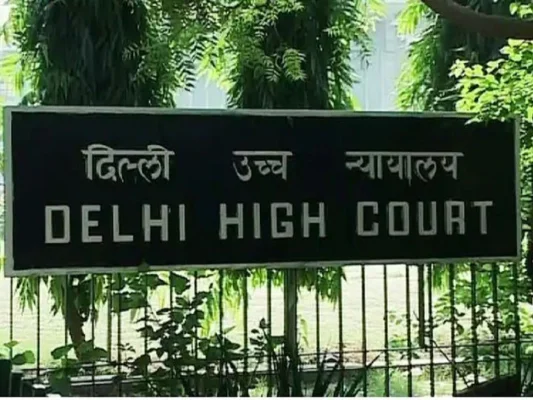INDIAN PENAL CODE SECTION 302-
सर्वोच्च न्यायलय ने हल में अपने दिए निर्णय में उन परिस्थितियों पर चर्चा की, जिनका उपयोग यह निर्धारित करने के लिए किया जा सकता है कि क्या भारतीय दंड संहिता की धारा 302 के तहत हत्या के मामले में हत्या करने का इरादा था।
शीर्ष अदालत द्वारा उत्तराखंड राज्य की अपील पर सुनवाई कर रही है जिसमें आईपीसी के धारा 302 तहत अपराध के लिए आरोपी की सजा को खारिज करने के उच्च न्यायालय के आदेश को चुनौती दी गई थी और ट्रायल कोर्ट के आदेश को बहाल करने की मांग की गई थी, जिसमें धारा 302 आईपीसी के तहत अपराध के लिए उसे दोषी ठहराया गया था और उसे आजीवन कारावास की सजा सुनाई।
जस्टिस एमआर शाह और जस्टिस बीवी नागरत्ना की बेंच ने कहा की पुलिचेरला नागराजू बनाम स्टेट ऑफ एपी, (2006) 11 एससीसी 444 में, कोर्ट ने देखा और माना कि मौत का इरादा आम तौर पर निम्नलिखित में से कुछ या कई के संयोजन से एकत्र किया जा सकता है, अन्य बातों के अलावा-
In the case of Pulicherla Nagaraju (supra), this Court had an occasion to consider the case of culpable homicide not amounting to murder and the intention to cause death. It was observed and held by this Court that the intention to cause death can be gathered generally from a combination of a few or several of the following, among other, circumstances:
(i) nature of the weapon used;
(ii) whether the weapon was carried by the accused or was picked up from the spot;
(iii) whether the blow is aimed at a vital part of the body; (iv) the amount of force employed in causing injury;
(v) whether the act was in the course of sudden quarrel or sudden fight or free for all fight; (vi) whether the incident occurs by chance or whether there was any premeditation;
(vii) whether there was any prior enmity or whether the deceased was a stranger;
(viii) whether there was any grave and sudden provocation, and if so, the cause for such provocation;
(ix) whether it was in the heat of passion;
(x) whether the person inflicting the injury has taken undue advantage or has acted in a cruel and unusual manner;
(xi) whether the accused dealt a single blow or several blows.
(i) इस्तेमाल किए गए हथियार का प्रकार;
(ii) क्या आरोपी के पास हथियार था या उसे मौके पर ही उठा लिया गया था;
(iii) प्रहार शरीर के किसी महत्वपूर्ण भाग पर निर्देशित है या नहीं;
(iv) चोट लगने के लिए प्रयुक्त बल की मात्रा;
(v) क्या यह कृत्य अचानक हुए झगड़े, अचानक हुई लड़ाई, या सभी के लिए स्वतंत्र लड़ाई के दौरान हुआ है;
(vi) क्या घटना संयोग से हुई है या यदि इसकी योजना बनाई गई थी;
(vii) क्या कोई पिछली दुश्मनी थी या यदि मृतक एक अजनबी था;
(viii) क्या कोई गंभीर और अचानक उकसावे का मामला था और यदि हां, तो इसका क्या कारण था;
(ix) क्या यह गुस्से में आकर किया गया था;
(x) क्या चोट पहुंचाने वाले व्यक्ति ने स्थिति का अनुचित लाभ उठाया या क्रूर और असामान्य तरीके से काम किया;
(xi) क्या आरोपी ने एक ही वार किया या कई वार किए।
पुलिचेरला नागराजू बनाम स्टेट ऑफ एपी, (2006) 11 एससीसी 444 निर्णय में उन उदाहरणों का भी उल्लेख किया गया है जिसमें कहा गया था कि अपवाद 4 को लागू किया जा सकता है यदि मृत्यु होती है:
(i) पूर्व-विचार के बिना,
(ii) अचानक लड़ाई में,
(iii) अपराधियों द्वारा अनुचित लाभ लेने या क्रूर या असामान्य तरीके से कार्य किए बिना , और
(iv) लड़ाई मारे गए व्यक्ति के साथ होनी चाहिए।
केस टाइटल – The State Of Uttrakhand Vs Sachendra Singh Rawat
केस नंबर – CRIMINAL APPEAL NO. 143 OF 2022
कोरम – जस्टिस एमआर शाह जस्टिस बीवी नागरत्ना








![सुप्रीम कोर्ट ने बताया: कैसे तय करे कि मामले में हत्या [IPC SEC 302] करने का इरादा था या नहीं? 25 SEC 302 IPC SC](https://jplive24.com/wp-content/uploads/2022/02/SEC-302-IPC-SC.jpg?v=1644121301)




